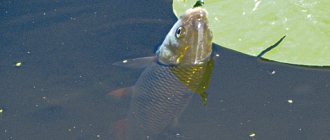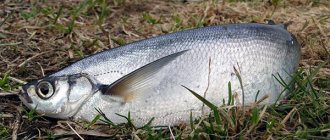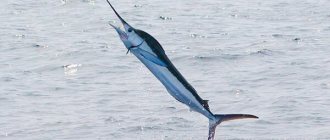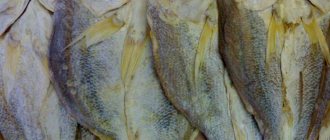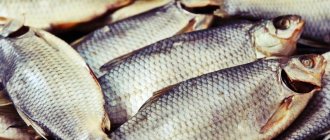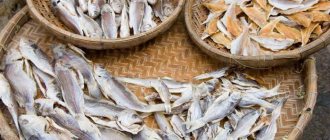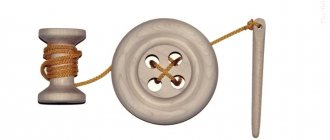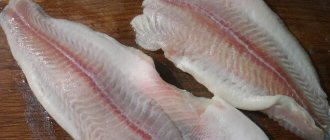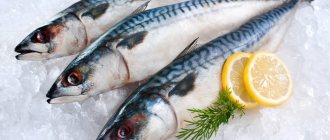What kind of fish is ram?
Content
Taranka (as people affectionately call the prey) is a small fish, rarely reaching a size of more than 35 cm and a weight of more than two kilograms. It is possible to fish for it in sea waters. Spring is considered the most favorable fishing period, because almost every individual is overflowing with eggs. This factor undoubtedly pleases fishermen.
Spring is considered the most favorable period for catching rams
How to make taranka correctly: dry salting method
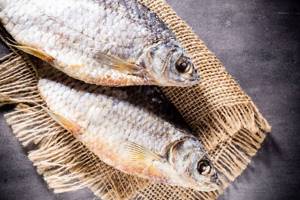
First, rub the fish well with salt, pour salt into the belly, into the cut on the back and into the gills, if you decide not to remove them. The carcass is pierced with a fork or knife and salt is rubbed into the holes. Pour about 0.5 cm of salt into a large stainless steel metal dish, place the ram in dense rows with the back facing down and sprinkle generously with salt on top to create a real salt layer 1 cm thick. For 1 kg of fish, approximately 250 g of salt are required.
Make another layer, and then place a plate smaller than a pan or a wooden board on top - this is necessary to provide fresh air to the fish. Place a pressure on the lid and put the fish in a cold place, such as a refrigerator, cellar or balcony. At the same time, make sure that the fish does not get exposed to sunlight. By the way, at first it is better to apply a little pressure, after about 6-7 hours you can increase it - this way the fish will be salted evenly. It is interesting that in Rus', in villages, fish was salted in a wooden box with holes, which was placed in a spacious container.
During the salting process, liquid is formed that will have to be drained, and the salting time depends on the size of the battering ram. A fish weighing up to 100 g is salted for 1-2 days, a medium-sized fish weighing 600-800 g is enough for 3-4 days, and large fish will need from 5 to 14 days until completely salted. As soon as the ram stops releasing juice, it is ready, but first it should be washed well and soaked in cold water for 2 hours, then kept in vinegar water for an hour - take about 50 ml of vinegar per bucket of water. This is done to prevent the proliferation of pathogenic microorganisms, which cause the ram to deteriorate very quickly.
Appearance
Since the fish belongs to the carp family and is very similar to roach, it is often confused with this representative of the aquatic world. But, knowing what ram fish looks like and certain characteristics of the individuals, it will not be difficult for the fisherman to find the differences.
The sea dweller has:
- small scales;
- tall body;
- anal fin consists of 9-10 rays;
- The paired feathers at the edges are dark in color.
A distinctive feature of the fish is its teeth, which are much thicker than those of roach.
Taran - a trademark, its disappearance
This fish does not rise high in rivers. Its spawning occurs somewhere at the end of March or the very beginning of April in the grass and reeds, then the ram fish goes back to the sea. For the reason that it was previously sold only in dried form in the Kuban, on the Don, and throughout the Azov region, ram is called any fish that looks like a roach or roach.
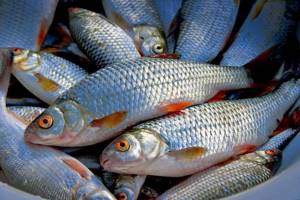
In past times, all the rivers flowing into the Sea of Azov, especially the Don, were very important for fisheries and produced a huge amount of ram. Now, unfortunately, there has been a complete depletion of the entire basin, and rams, unfortunately, are no longer caught anywhere. The reason for this is not fully understood, but it is assumed that the unlimited fishing of the ram has brought it to the brink of extinction. So you need to be very careful, otherwise the most useful fish will completely disappear.
Habitat
Having decided to get a sea creature, fishermen are interested in where the ram fish is found. In most cases, they go fishing for this type of prey to the Azov and Black Seas. In the spring, vertebrates move to river mouths to spawn. Paradoxically, this representative of the marine world does not really like salt water and often moves to estuaries, bays, canals and rivers. You can catch a ram at any time of the year. Prey like to swim in places with a bottom covered with algae and silt.
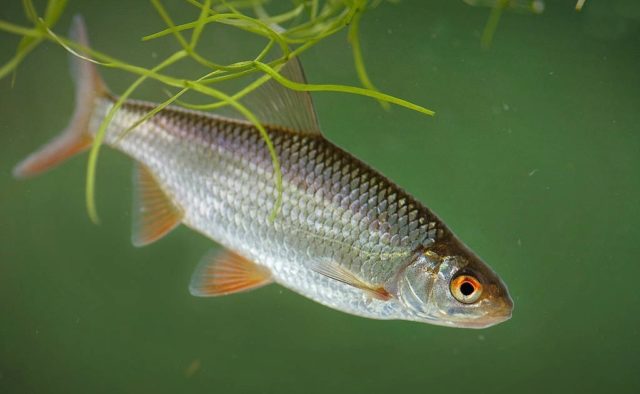
In places with a bottom covered with algae and silt, rams like to swim
Wet salting of fish
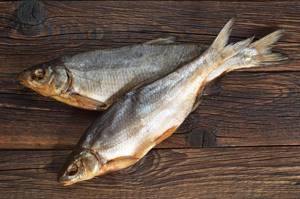
According to this recipe, the ram is salted in a fairly concentrated brine, and the degree of salt concentration is checked with a raw egg - it should float to the surface. A strong solution for salting fish is called brine, and the fish is kept in it for about 3-4 days, and so that it does not float and is salted evenly, it is covered with a metal mesh on top or a grate is placed on which a weight is placed. The bucket, basin or pan where the ram is salted should be placed in a cold place so that the fish does not spoil. For wet salting, fish weighing less than 0.5 kg is usually taken. In general, the question of how much to salt the ram depends on the size of the fish - the larger it is, the longer the salting process will be.
After this, the salted fish is washed well and soaked in fresh water - small fish for 30 minutes, and large fish for several hours. In this case, it is recommended to change the water several times, and after the first change of water, let the fish lie in the air, come to its senses and allow the salt to be evenly distributed in the tissues. Then you can put it in the water again, and when the fish starts to float, the soaking process can be considered complete. Don't worry about how to salt the ram without oversalting it - it is believed that it will absorb as much salt as needed. Salted and soaked fish becomes slightly transparent and acquires a light amber hue.
Tackle and fishing methods
It is possible to catch marine vertebrates using float rods, donks and feeders, as well as winter fishing rods. It is also possible to fish from a boat.
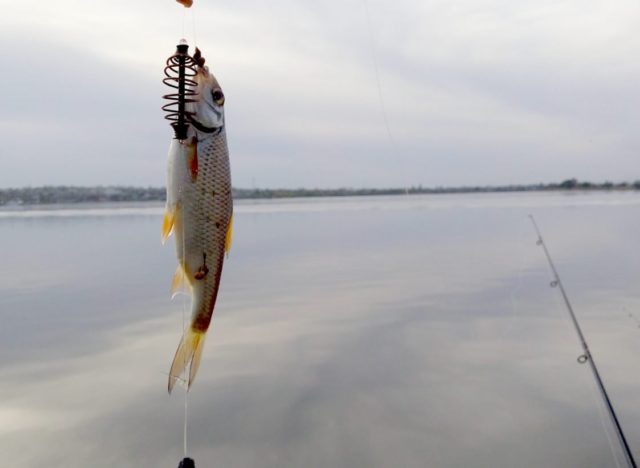
It is possible to fish on a feeder
Recommended use:
- main line, the thickness of which does not exceed 0.12 mm;
- leash – 0.10 mm.
Using a float, a fisherman has the opportunity to fish in one of three ways:
- Fly fishing - with the use of a fly fishing rod for close fishing.
- Bolognese - a Bolognese fishing rod is used for long-distance casting.
- Match - is a match fishing rod for long casts. It comes in the form of a plug-in form consisting of elbows with a practical handle.
The structure should be loaded with spaced pellets. This will allow the bait to slowly sink to the bottom when it comes into contact with water. Thus, in addition to the main purpose, the bait will also serve as complementary food.
It is recommended to use float tackle with a length of 4 to 5 m with a spinning reel, the spool of which will have no more than 2500 units. Preference should be given to thin (up to 0.14 mm) fishing line and floats with keels. Hooks should be selected according to the bait number.
Feeder fishing involves using a rod up to 13 feet long with a spinning reel that has a small spool. A fishing line with a thickness of 0.12 mm would be an ideal option. The length of the leashes can vary from 50 to 80 cm; thickness – up to 0.10 mm. It is best to rig directly at the fishing spot. The installation method depends on the terrain, fishing conditions and the preference of the angler.
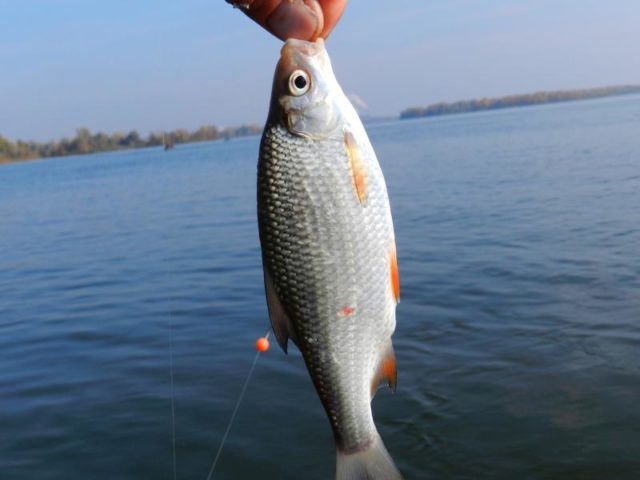
With the help of float rods it is possible to catch marine vertebrates
Catching roach and ram
Catching rams and roaches is not particularly different from each other. It is best to go for these fish in the spring, when they are in their pre-spawning run. At this time, fishing for these subspecies of roach is most effective. They are also successfully hunted after spawning and in the second half of autumn.
Ram and roach are schooling fish that move throughout the water area. Therefore, the main task for the fisherman is to detect their schools, and the rest is a matter of technology - well-chosen and configured gear, the chosen bait and bait mixture.
Catching rams and roaches is carried out using float and bottom gear. The latter are more in demand, diverse and effective. This can be a regular feeder or picker, a donk or a cargo, an elastic band or a throw. Basic rod and reel gear looks like this:
- A feeder rod or for bottom fishing with a length of 2.1 to 4.2 meters, depending on the distance and fishing conditions. Test for baits from 100 to 200 grams.
- Inertia-free power coil with a gear ratio of about 4.2:1, size 4000–6000. Representatives of the “old school” catch with Soviet-style inertia.
- Monofilament line with a thickness of 0.3 to 0.4 mm or braided cord with a breaking load of up to 5–7 kg.
A leash made of monofilament 0.2–0.25 mm thick, 30 to 80 cm long, is tied to the main fishing line, depending on the activity of the fish and the horizon in which it rises upstream. A feeder or lead weight of the required weight is used. The hook is selected according to the bait and the potential size of the prey.
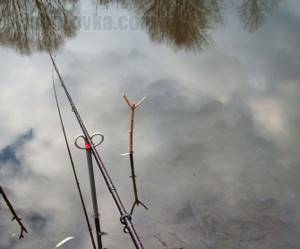
Photo 2. Catching roach on a feeder.
If the fisherman does not have a suitable fishing rod, then the simplest ramming tackle, made in the form of a banal hook, will help out:
- We take a monofilament line 0.35–0.4 mm thick, about 100 meters long, and wind it on a reel.
- At the end of the fishing line we tie a massive lead sinker, which is necessary to hold the equipment at the desired point.
- On the main line we make several loops 2–3 cm long for attaching leashes. We knit the first one 10–15 cm from the load. The distance between them is 20–40 cm.
- Using the “loop-to-loop” method, we attach leashes from fishing line with a diameter of 0.22–0.26 mm and a length of up to 30 cm.
- All that remains is to attach single hooks of a suitable size to the leashes.
The presented tackle, although inferior in sensitivity to the feeder and picker, has the advantage of ease of manufacture and minimal costs for the purchase of its elements.
Catching rams and roaches with a float rod is practiced in places where long casting is not required, and fishing is carried out short. These can be narrow channels, branches, long grooves under the shore, shallow areas with last year’s aquatic vegetation.
In this case, float tackle for catching rams and roaches is selected to be light, but reliable enough to catch heavy fish. The rod used is telescopic, 5–6 meters long. The fishing line is monofilament, with a diameter of up to 0.3 mm with a breaking load of at least 3–4 kg.
Some anglers catch roaches and rams using match rods. In this case, spinning reels of 1500–2000 in size and thinner fishing lines are used, compared to bottom gear. This is possible in places with moderate currents, where depths range from 1 to 3 meters.
Lures
Roach, ram, like roach, are peaceful underwater inhabitants that are caught using bait of animal and plant origin. Some of the baits for fishing them include:
- worm;
- bloodworm;
- maggot;
- caddis larva;
- burdock larva;
- grasshopper
In cold water, the most preferred baits are worms and bloodworms. As the weather warms up, the other baits listed start to work.
In the warm season, especially in the hot summer months, fish prefer vegetable baits. Of the most popular and affordable baits for catching rams and roaches, we can recommend:
- parboiled wheat;
- canned corn;
- dough.
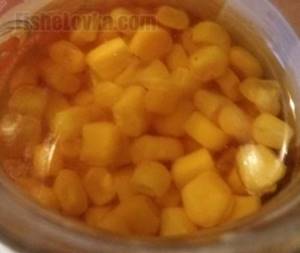
Photo 3. For preservation, corn is filled with sunflower oil.
Some fishermen successfully use small flavored boilies, ordinary bread crumbs, canned or fresh peas.
We must not forget about such bait for roach as polystyrene foam. Being inedible, it attracts fish due to its positive buoyancy and vibrations in the current. “Foam” balls are relevant in bottom rigs, when the main attachment or bait needs to be raised higher, since the ram feeds in the water column.
Lure
Catching rams and roaches in their pre-spawning run does not require the use of bait, since the fish continuously moves to the spawning sites, and there is no point in trying to keep it at a given point. It is much more effective to actively search for fish and fish directly on their “paths”.
During the warm season, it is recommended to use a bait mixture, which will attract fish to the fishing area and keep it there for a certain time. To do this, you can use factory-made “bulk”, or you can prepare inexpensive but high-quality bait with your own hands. This is done like this:
- Pour one and a half liters of cold water into a regular enamel pan.
- Add 300–500 grams of peas to it, previously filled with water the night before.
- Bring the water to a boil, reduce the heat, cover the pan with a lid and simmer the peas for about an hour.
- Grind the cooked peas to a puree. This is done using a meat grinder, blender or other available means.
- Add a tablespoon of sunflower oil to the prepared pea puree.
Instead of vegetable oil, peas can be ground with peeled sunflower seeds.
Advice! Instead of peas, you can use pearl barley, barley, and millet cereals.
When you arrive on a fishing trip, mix the prepared puree with soil obtained on the shore or at the bottom of the reservoir. We form balls with a diameter of 5 to 10 cm. First, we make a starting feeding, throwing 7 to 10 of them into the water. Then we throw in a few pieces every 15-30 minutes.
Lures and bait
Attachments and baits for ramming can be maggots, bloodworms, dough, semolina chatter, baked goods, dung and earthworms, cereal grains (pre-steamed). Fish reacts sharply to complementary foods, so it should be selected wisely, taking into account the time of year and other nuances. For example, in winter you should definitely give preference to bloodworms, and in the warm season to maggots and baits of plant origin.
The prepared treat should include products of different fraction sizes. The bait should be inconspicuous, fragrant and natural in color.
Sometimes, not knowing whether the ram is a river or sea fish, fishermen mistakenly prepare bait from expensive and hard-to-find components. This is completely in vain; the marine inhabitant, like other vertebrates, feeds on everything it finds in the water.
Read more
What tackle to choose for grayling?
Winter fish: smelt, ram, burbot - behavior and habitat.
The winter bite is still going on, and some fish require special attention. For an excellent winter catch, it is better to know the characteristics of the fish itself. Let's consider some types of winter fish that feel good in cold water.
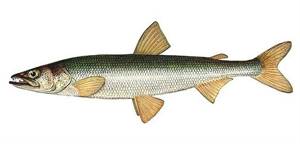
Smelt (Osmerus eperlanus)
The body of smelt is elongated, covered with large, easily falling scales. The mouth is big. The sides of the body are silvery, the back is brown-green.
The size of smelt is small - from fifteen centimeters, and the largest individual, perhaps, will not exceed thirty. Its characteristic feature is the smell of cucumbers emitted by fresh smelt.

Smelt, a fish from the order Salmonidae, is highly respected by fishermen throughout the Gulf of Finland. Smelt is widespread in the basins of the Baltic and North Seas, Lakes Ladoga and Onega.
There is a special attitude towards this fish in our northern capital. Annually in St. Petersburg
They organize
a “Smelt Festival”
in April-May, when the fish enters the Neva.
The event has its own traditions.
Starting with the ceremonial sampling of the “General’s fish soup” according to the recipe of the first Governor-General of St. Petersburg A.D. Menshikova, smelt lovers take part in fishing competitions. Also, an annual stocking campaign is organized, in which everyone takes part - thousands of salmon fry are released into the waters of the Gulf of Finland to preserve the fish population. The cultural capital organizes exhibitions dedicated to smelt during the holiday; St. Petersburg artists depict fish in their own way and manner, paint caricatures and cartoons, poetry and photo competitions are held.
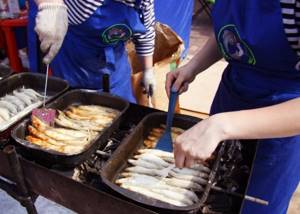
And, of course, throughout the holiday, smelt is fried on huge grills according to various recipes.
They catch smelt in winter on the southern shores of the Gulf of Finland, in the area of Garkolov, Ruchyev, Vistino, Koporskaya Bay - about 130-150 km from St. Petersburg. You can also find European smelt in the Volga basin, in the Rybinsk, Gorky, Kuibyshev and Saratov reservoirs. Adult smelt usually form large schools. Smelt is a predatory fish - it feeds on zooplankton, juveniles and fish eggs. Character of the fish
It is very shy, but sometimes it bites on inedible things.
Some fishermen use ordinary colored foam rubber as bait, cut into small pieces of 0.5 by 0.5 mm. But it is worth remembering that smelt is a predator
and is best at taking pieces of any fish.
Smelt has its own food preferences, which can change throughout the day, so you need to have several types of bait
: pieces of ruff, perch, crucian carp or carp, of course, fresh.
Winter fishing for smelt
It is carried out on small jigs with a diameter of no more than 4-6 millimeters. It is difficult to predict which bait will work, so fishermen have jigs of different colors and shapes in their arsenal, which increases the chances of frequent bites and a good catch.
Buy winter jigs
available in our store.
During spawning, the body, head and fins of smelt become covered with tubercles. Spawning begins soon after ice drift, when the water temperature reaches 4 °C, and the peak occurs at a temperature of 6-9 °C. To spawn, the White Sea smelt enters rivers and streams, moving away from the sea no more than 2-3 km, or even just a few hundred meters. Mass spawning usually lasts only a few days. In the rivers of Primorye, smelt goes no higher than 16-18 km.
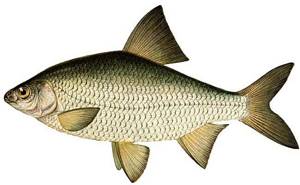
Ram (Rutilus heckelii)
The body of the ram is elongated, laterally compressed. There are 41–46 scales in the lateral line. The mouth is small, lower. Color: the back and upper part of the head are dark gray with a bluish tint. The sides of the body are gray in the upper part, silvery in the lower part. The belly is silvery. The dorsal and caudal fins are gray, the remaining fins are light gray with a yellow-orange tint. The iris of the eye is pale yellow. Maximum length - 50 cm.
Common roach
is a silver-colored, medium-sized fish that prefers fresh waters of lakes, rivers, ponds and reservoirs. But its subspecies, living in the Azov-Black Sea basin, is known as
ram
.
Another subspecies of roach from the Caspian Sea basin is roach
.
Unlike the common roach, both the ram and the roach chose brackish water as their habitat. To feed, they go into sea water, into the pre-estuary areas of rivers with low salinity and are larger in size than ordinary roach. If it grows to 25-30 cm, then the ram reaches half a meter if it does not get caught in the net first. The ram feeds on mollusks and zooplankton, worms and crustaceans and is considered a benthophage, that is, it feeds on bottom microorganisms, in search of which it often sinks to the bottom. The specially developed winter bait Minenko Taran cool water bait
, with a high content of components of animal origin, perfectly water temperature below 16 degrees.
Ram Cool Water has proven itself especially well when fishing for ram, crucian carp, bream and other carp fish in the Azov basin, but it works no less successfully in other bodies of water.
Mir Okhota stores offer an assortment of winter and other bulk baits for various types of fish. The ram reaches adulthood at 3-4 years of age. In the spring, usually in April, when the water temperature exceeds 6 °C, large schools of fish enter rivers, estuaries, and canals for spawning. The ram lays its eggs on flooded vegetation and washed-out rhizomes of reeds, cattails, and reeds. You can catch roach and ram throughout the year.
there are restrictions on catching rams
For example, in the Black Sea area you can catch fish measuring at least 18 centimeters, and in Azov they catch a 14-centimeter ram. There are other restrictions on catching fish, in terms of size, quantity - each territory has its own rules. The rules can be read in the article “Ban on fishing in 2021”.
The weight of a mature ram can reach 500 g. During the period of open water, ram fishing is carried out actively in the spring, after the water warms up to 10 ° C, when it enters rivers, estuaries, and channels in large schools for spawning.
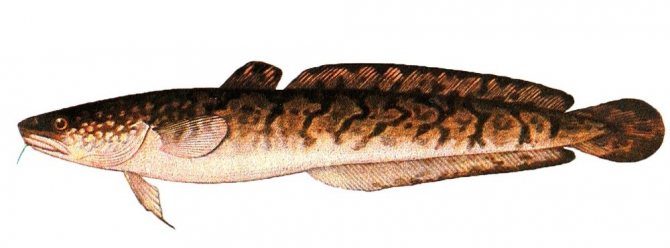
Burbot (Lota lota)
The Mediterranean burbot is brown in color with numerous irregular spots. The fry have a blue back, silvery sides and belly, and in the summer, when the fry switch to a bottom lifestyle, they change color to brown. On the burbot's chin there is one unpaired barbel (constituting 20-30% of the length of the head) and a pair of barbels on the upper jaw.
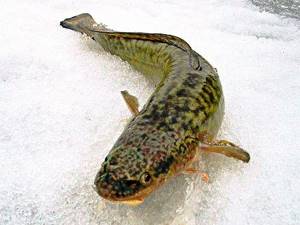
(G. Mediterraneus, or in common parlance “molt”) also lives in the Black Sea, where it is the only representative of the sea burbot.
The Black Sea sea burbot
reaches a length of 50 cm.
Burbot lives at shallow depths off the coast on rocky soils with aquatic vegetation. Burbot likes to hide in places protected on all sides, so-called “burrows”. This is facilitated by the appearance of the fish - a slippery long body with large fins. Several burbots can gather in “shelters” at once (in some cases up to 10 individuals), sitting out during the day and going out hunting at night
.
The Black Sea burbot feeds on small fish, crustaceans, and polychaetes. Burbot is a cold-loving fish
.
Food is digested and absorbed at low water temperatures, and spawning occurs under ice in winter. Therefore, burbot have a longer fattening period in northern reservoirs, and with an abundance of food, they grow faster there. Winter fishing for burbot
involves the use of cold water bait.
A series of Good Catch baits from Minenko
for winter fishing, it holds the fish well at the fishing point, without saturating it. Designed specifically for float fishing and bottom fishing with a feeder. Attractive price, long shelf life!
Best time to catch burbot
and in the Black Sea water area -
the period from March to April
.
You can catch burbot in the winter months, because at high water temperatures the burbot feeds very little, and successful fishing is possible when the first frost sets in after sunset and until dawn. Minenko Team experts share with you the features and secrets of fishing in cold water. Equipment
and
bait for winter fishing
are presented in all retail fishing stores and the World of Hunting online store.
the article about winter bait
here.
Features of winter fishing and fish behavior
are presented in the article “Winter fishing 2021 - ice fishing and fish biting calendar.”
Happy biting!
The reference article is based on the expert opinion of the author
Who killed the Don fish
“It’s warm already, we’re about to give birth,” Nastya says thoughtfully. “We’ll give injections on Saturday, and we’ll start on Sunday.”
In the life of a young girl, this happens once a year, no less and no more. Three hundred half-meter females are going to give birth at the head fish farmer of the Don Sturgeon Factory, Anastasia Kuznetsova. Now they are splashing around in the huge bathtubs of the antenatal workshop. The planned emergency at the plant in the Semikarakorsky district of the Rostov region always falls in April.
12-15 hours before the start of artificial spawning, Anastasia injects pregnant females with accelerating drugs. Outsiders are not allowed into the workshop so as not to disturb expectant mothers. When the time comes, the female is pulled out of the pool and carefully carried to the next workshop, the operating room. Here the chief fish farmer carefully cuts a hole in the belly of the fish and “milks” the eggs from it. Then the wound is stitched up.
The males do not stand aside: their sperm is taken from them here and then added to the bowl with the eggs. Nastya mixes the resulting mass, that is, she personally carries out fertilization. With these confident hands of a hereditary Cossack woman.
“We fertilize manually because the natural percentage is quite low,” explains the chief fish farmer. On such days she does not go home, she sleeps fitfully right at the factory. Sacrifices his personal life for the sake of sturgeon.
The larvae from the eggs mature in the hatchery for three or four days, depending on the water temperature. They are then transferred to a nursery. In June, the newborn fry will set off on an independent voyage along the Don. And the “mothers” who successfully survived childbirth will fatten themselves in summer ponds until next spring.
“At first we tried to get caviar in the usual way, catching producers in the river,” says plant director Yuri Trubilka, “but then we realized that there was no one to catch in the Don. We created our own broodstock. Now it contains more than seven thousand specimens of Russian and Lena sturgeon, beluga, stellate sturgeon, and sterlet. Let's try to work with thorn and paddlefish.
Kuznetsova grew up in the Semikarakorsky district and has been working at a state plant for three years after graduating from the biology department of the Don Agrarian University. I started with the egg incubation workshop. She is so passionate about her profession that she considers spawning the main event of the year.
“Our Nastya once on the banks of the Don saw how two fishermen pulled out a teenage sterlet in a net,” recalls director Trubilka. “And she wasn’t afraid to tell strangers that the youngsters needed to be released.” They said to her: “Who are you?” - “And I raised this fish.” And they let me go and obeyed.
But what happened to the delta of the great Don, if sturgeons in it now give birth only under human supervision, and a girl fights with fishermen for the life of a single individual?
A truth that the seller in the fish department is unlikely to tell you. The “Don bream” that you see on the counter of a store in the capital is almost certainly raised on a farm in a pond near Moscow. “Don Shemaika” is also almost guaranteed to be from there, and in addition it is not a Shemaika at all, but most likely a banal bleak.
“Of the hundreds of “Don bream” sold in Moscow, 99 are artificially grown in the Moscow region. The real ones make up a maximum of 1%, and even then I flattered the market.”
Did a good friend bring you bream from Rostov-on-Don itself and choose it there personally at the market? Make no mistake, there is a high probability that such a fish has never swam in the Don waters. Carp, grass carp, carp, crucian carp - the region has long learned to produce all this in the ponds of private farms using compound feed. In the Don itself, in its lower reaches, there is very little fish.
But if there was once a fish paradise on Earth, it was located in the Sea of Azov and the deltas of the 17 rivers flowing into it, says Sergei Dudkin, head of the department of the Azov Research Institute of Fisheries.
In deltas, the fry's chances of survival are an order of magnitude higher than in the sea - there are fewer predators. Rivers carry a large volume of fresh water into the shallow Azov, and with it the grown offspring. Over millions of years of evolution, the Don (aka Azov) fish became a nomad, mastering both the sea and rivers.
In terms of the number of fish per square kilometer of surface, the Azov Sea in the middle of the last century exceeded the Mediterranean by 160 times, and the Black Sea by 40.
The decline began with the construction of the Volga-Don Canal and the associated Tsimlyansk Hydroelectric Power Station. Laid down in 1949, it provided the Don with large-capacity shipping, gave the region cheap electricity and expanded the area of irrigated land. The creators of the project even proposed growing cotton in the Tsimla floodplain.
The “Great Construction of Communism” had its price. By the 1980s, one of the most fish-producing reservoirs on the planet ceased to be so. The Tsimlyansky hydroelectric complex cut off the passage of Don species to spawn. Experiments in the form of “elevators” for fish did not bring any tangible benefit. The shoals had been following their own routes for millions of years and stubbornly refused to learn how to press elevator buttons.
The catch of valuable species in the Sea of Azov and its rivers was 200 thousand tons annually before the opening of the hydroelectric station, and such small things as sprat, anchovy and goby were not taken into account in this volume. By the time of the collapse of the USSR, production had dropped to 16-18 thousand tons.
If fish could talk, they would have questions for domestic oil workers and the authorities of neighboring Ukraine. They dealt two further blows to the already reduced population of the inhabitants of the Don.
In the eighties, Soviet tankers brought a predatory sea animal on their bottoms to the Black and Azov Seas - the jellyfish-like ctenophore Mnemiopsis. In the new environment, it had no enemies; the ctenophore multiplied and destroyed zooplankton, the food source for fish. And he didn’t disdain the caviar itself. Tulka, which once amounted to 1.5 million tons in the Azov Sea, has decreased in number significantly.
They had just begun to breed Mnemiopsis with the help of the invasive ctenophore that ate it when the USSR collapsed. The Sea of Azov began to belong not to one state, but to two. All seven Soviet fish farming enterprises remained on the Russian side: three in the Rostov region, four in the Krasnodar region. And Ukraine only got to catch and sell.
“Negotiations with Ukraine on the protection of fish in the Azov Sea were painful,” recalls their participant, head of the department of the Research Institute of Azov Fisheries, Sergei Dudkin. “Although there’s no telling the truth, in the dashing 90s, both economic parties committed robbery.”
Thus, the fraternal countries caught up to the last sturgeon from 50-ton stocks made by Soviet fish factories. Then they took on the pike perch, and then it was the turn of the sawfish - now they also have to be saved.
The neighbors dealt the strongest blow to the biological resources of the Azov Sea during the presidency of Viktor Yushchenko. In 2007, a private company from Berdyansk began fishing on four large-capacity vessels of an unprecedented size here.
“They caused such damage to the sea that there is nothing to compare it with,” says Sergei Dudkin.
Under the guise of scientific research, ships used large trawls (fishing gear, nets), capturing everything in their path from the surface of the sea to the bottom. They worked for 8-9 hours continuously, leaving behind a water desert.
“We have been asking Ukraine for four years to stop fishing from large vessels in the Sea of Azov. Finally they were laid up, but managed to inflict incredible, irreparable damage."
In 2010, the volume of production in the Sea of Azov was only 11 thousand, of which three quarters were anchovy and sprat.
Konstantin, an athlete with defined muscles, has been “fishing” for 30 years. In Taganrog this is what they call it. Slightly narrowed, attentive eyes. Calm, confident intonation.
Almost every day, seven months a year - from May until the end of autumn - Konstantin and two comrades go to sea on a high-speed canoe (emphasis on the “a”) - a motor boat. Having returned, he lifts 30-kilogram bags of catch up a steep cliff. Sometimes five, sometimes ten. So I built up muscles.
His great-grandfather, grandfather and father “were involved in fish.” Like 48-year-old Konstantin, they lived in Bogudonia, an ancient coastal district of Taganrog, which is considered a “poaching zone.” From the point of view of the law, our hero is not completely clean - he does not declare income. In truth, his name is not Konstantin.
“There is no fisherman from Yeisk to Kagalnik and from Mariupol to Taganrog, even if he were a thrice honest person, who would not dream of fishing at least once in protected waters.”
Waiting on the shore of Konstantin is his wife Anna, a beautiful petite woman from another part of the city. I’ve been married for a quarter of a century and still worry every time: what if my husband doesn’t return and dies in the sea waves?
“Now at least there are mobile phones, but before I sat by the window, worried, and went out to the cliff.” My Kostya is experienced, he knows the sea like the palm of his hand. But sometimes fishermen die close to the shore. Recently, during a storm, a neighbor rushed to pull out the boat - and the wave carried him away. Buried.
Immediately after the wedding, Konstantin introduced Anna to the fishing craft. It’s customary here: the husband goes to sea, the wife sells the catch. Anna resisted at first, but then got the taste and for many years became an adornment of the fish rows of the Taganrog Central Market. (We also changed her name at her request).
Essentially, he is a private entrepreneur. But like many in Bogudonia, he does not formally record his status, preferring to “negotiate with people.”
“To work as an individual entrepreneur, you will have to get a quota,” explains the fisherman. — Having returned to the shore, we will have to hand over the fish to the receiver under the supervision of a controller. He is not there at night or early in the morning. You wait two or three hours and the catch is gone.
According to Konstantin, fishing does not bring him much money.
“With the best catch, we bring 400 kilograms ashore, which is how much the canoe can hold.” But more often 100-120 kilograms. We rent it out for 30 rubles to resellers or people who salt and smoke. We divide the earnings between three, it comes out from a thousand to four thousand per exit for each. We deduct the costs of fuel, nets, and fees for assistants who untangle them. And a boat with a motor costs about a million.
It is becoming more difficult to negotiate illegal work, the Bogudon fisherman complains, and control has increased. Previously, it was possible to “resolve the issue” with the police, but now we have to take border guards into account.
- Previously, I “bought a ticket” - and caught it in peace. And now people can call and say: “Don’t go to sea today.” - “But I paid you.” - “If you go out, we will have to catch you.”
Konstantin recalls how in the 1990s, poachers took a policeman into a boat to solve “unforeseen problems” right at sea.
“There was a case when our engine stalled, and we were ten kilometers from the shore. The policeman turned out to be strong, swam to the shore and brought help.
Konstantin says that he would not pass on the profession to his son, it is too dangerous. However, so far he and Anna have only a daughter, already an adult. He works as a salesman in a cosmetics store and does not want to participate in the family business.
“But I can’t do anything as well as fish,” says Konstantin.
The conviction of Taganrozh residents that the inhabitants of Bogudonia are completely involved in illegal fishing is, of course, exaggerated. But many people here are connected with the sea professionally. In the past, the entire population of the region was fishermen, salters, and fish merchants.
The depletion of Azov fish stocks led Bogudonia to decline. Fewer and fewer fishermen are able to support their families with their traditional craft. Skills are being lost, houses are being destroyed, Bogudonia is falling into disrepair. The descendants of those who accepted the catch from the fisherman on the shore will soon forget how to dry fish.
If this continues, the southern city will lose a huge part of its gastronomic charm. There will be no fatty fish, transparent fish, dry pike perch with beer, or caviar bream.
It is unlikely that it will be possible to return sturgeon to the Don in commercial quantities this century. And in most of the Sea of Azov, the previous breeds of freshwater fish can no longer live due to the increasing salinity of the water. This is also a consequence of the construction of the Tsimlyansky hydroelectric complex: without normal floods, less and less fresh Don water flows into the sea. And the salty one goes into it from Cherny through the Kerch Strait.
In March, an expedition from the Southern Scientific Center of the Russian Academy of Sciences made regular salinity measurements. It has increased steadily for the third year in a row.
In 2015, a team from the Azov Research Institute of Fisheries studied the commercial ichthyofauna of the Azov Sea.
It turned out that the Taganrog Bay remains rich in fish - the last part of Azov, where the water remains relatively fresh. Here, researchers raised ram, herring, goby, singil, pilengas, flounder, silver crucian carp and even red-listed sturgeon and stellate sturgeon.
In the salty water of the central and western part of the sea, there are a lot of gobies, flounder, mullet, red mullet and Russian sturgeon of non-commercial sizes.
In good news, researchers noticed a significant increase in the number of juvenile sturgeon compared to last year. Half-meter-long sturgeon quickly disentangled themselves from the scientists’ nets and tried to escape back into the sea.
So, it’s not in vain that the Cossack Nastya works at the Donskoy plant day and night.
How they do it in Rostov: three recipes from Don fish (video)
